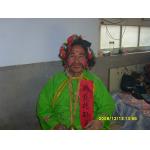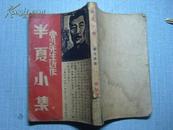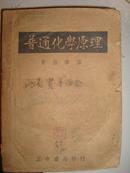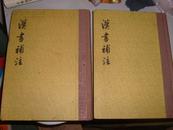
英语写作认知心理研究
¥ 9 4.5折 ¥ 20 九品
仅1件
陕西西安
认证卖家担保交易快速发货售后保障
作者王俊菊 著
出版社山东大学出版社
出版时间2005-06
版次1
装帧平装
货号20-3
上书时间2023-05-12
- 在售商品 暂无
- 平均发货时间 7小时
- 好评率 暂无
- 店主推荐
- 最新上架
商品详情
- 品相描述:九品
图书标准信息
- 作者 王俊菊 著
- 出版社 山东大学出版社
- 出版时间 2005-06
- 版次 1
- ISBN 9787560731162
- 定价 20.00元
- 装帧 平装
- 开本 32开
- 纸张 胶版纸
- 页数 347页
- 字数 333千字
- 正文语种 英语
- 【内容简介】
-
《英语写作认知心理研究》从历史与现实的角度分析了前人对英语写作过程的研究,结合认知心理学的最新研究成果,有针对性地研究了中国大学生的英语写作过程,提出了外语写作的思维模式、能力模式、过程模式和教学模式。
本书由三部分组成,共分十四章。除“引言”和“结论与建议”外,第一部分为理论综述部分,分为四章,较为详尽地综述了国内外有关英语写作过程的研究历史和现状,主要包括英语作为母语或第一语言的写作过程研究、英语作为第二语言的写作过程研究、英语作为外语和其他外语的写作过程研究、中国学生的英语写作过程研究。在此基础上分析了前人研究的局限性和研究空白,指出了研究中国学生写作过程的必要性和意义。
本书的第二部分为经验性研究部分,分为六章。首先论证了本研究的设计依据,描述了研究方法的设计、数据的收集和分析;然后叙述了本研究的主要结果和发现,其中包括:三组受试学生的写作过程、写作行为、组内和组间的共同点和不同之处;所使用的写作策略的种类、使用频率、组内和组问的不同和相似之处;学生的英语水平与写作子过程、策略的使用情况、母语的使用情况以及作文文本特点之间的关系。同时发现,学生英语水平的高低能够影响英语写作过程中的写前和写中阶段;学生的英语水平能够影响部分写作策略的使用,存在不同程度的正相关或负相关,在其他一些策略的使用方面,可能存在“门槛”现象;学生的英语水平直接影响到学生思维语言的选择和母语的使用量;学生英语水平的高低明显影响英语作文的文本特点和质量。
本书的第三部分包括三章,主要探讨了外语写作教学的理论框架。首先在前人研究成果的基础上,结合中国的实际情况,分析并讨论了主要研究发现的成因和相关理论依据,提出了有关“语言水平和思想表达”、“二语写作能力”、“中国学生写作过程基本模式”等假设性理论。然后多视角探讨了研究成果对写作教学的启示,强调了过程教学法、写作策略培训、有效使用母语、蔓为学,而写”和“为写而学”相结合的重要性,并针对中国学生的特点提出宁撼高英语写作教学水平的尝试性建议,构想了“成品一过程一实践”三位一体的写作教学框架。 - 【作者简介】
- 王俊菊,博士,山东大学外国语学院教授,应用英语系主任。1987年获山东大学英语文学学士学位,1993获山东大学双语翻译文学硕士学位,2004年获香港中文大学应用语言学哲学博士学位。1999—2000在英国雷丁大学做访问学者,并访学美国、加拿大,新加坡、韩国等地。长期从事英语教学和应用语言学领域的研究工作。合著有Introduc-tiontoAcademicWriring,主编、参编教材和学习书籍多部,并在AsianJournalofEnglishLaguageTeaching、JournalofAsiarlTEFL等国内外重要学术期刊上发表论文多篇。
- 【目录】
-
TABLEOFCONTENTS
ForewordbyGuyCook
ForewordbyYahHuang
ListofAbbreviations
ListofTables
ListofFigures
Chapter1AnOverview
1.1Introduction
1.2StatementoftheProblem
1.3PurposeandMethodoftheStudy
1.4SignificanceoftheStudy
1.5OrganizationoftheBook
PARTⅠALITERATUREREVIEWOFPREVEIOUSSTUDIES
Chapter2StudiesonENLWritingProcesses
2.1Introduction
2.2StudiesontheGeneralWritingProcess
2.3StudiesontheSub-processesofWriting
2.4CognitiveModelsoftheWritingProcess
2.5ChapterSummary
Chapter3StudiesonESLWritingProcesses
3.1Introduction
3.2Studies0ntheGeneral:ProcesSofESLWriting
3.3ComparisonofL1andESLWritingProcesses
3.4UseoftheL1andTranslationinESLWritingProcesses
3.5ChapterSummary
Chapter4StudiesonEFL/FLWritingProcesses
4.1Introduction
4.2ComparisonofL1andEFL/FLWritingProcesses
4.3UseoftheL1andTranslationinEFL/FL
ComposingProcesses
4.4LearningStrategyUseandEFL/FLWriting
Processes
4.5KnowledgeLevelandEFL/FLWritingProcesses
4.6ChapterSummary
Chapter5StudiesontheWritingProcessesofChineseLearnersofEnglish
5.1Introduction
5.2StudiesontheWritingProcessesofChineseESLLearners
5.3StudiesontheWritingProcessesofChineseEFLLearners
5.4ChapterSummary
PARTⅡAQUALITATIVESTUDYONTHEENGLISHICVRITINGPROCESSESOFCHINESEEFLLEARNERS
Chapter6RationalefortheStudy
6.1Introduction
6.2NeedforStudiesonEFLWritingProcesses
6.3NeedforStudiesonEFLWriterswithDifferentEnglishProficiency
6.4NeedforStudiesontheWritingProcessesofChineseEFLLearners
6.5NeedforStudiesOnNorr-EnglishMajorsintheChineseContext
6.6MethodologicalStrengthsoftheStudy
6.7ChapterSummary
Chapter7Methodology
7.1Introduction
7.2SafeguardsfortheResearchDesignoftheStudy
7.3TheParticipants
7.4SourcesofData
7.5ProceduresforDataCollection
7.6RationalefortheThink-aloudProtocolastheMainSourceofData
7.7AnalysisoftheData
7.8ChapterSummary
Chapter8Backgrounds,Perceptio/tsandAttitudes,WritingProcesses,andWrittenCompositionsoftheBand4Group
8.1Introduction
8.2WritingBackgroundsoftheBand4Group
8.3PerceptionsandAttitudesoftheBand4Group
8.4WritingProcessesoftheBand4Group
8.5FeaturesofWrittenCompositionsoftheBand4Group
8.6ChapterSummary
Chapter9Backgrounds,PerceptionsandAttitudes,WritingProcesses,andWrittenCompositionsoftheBand6Group
9.1Introduction
9.2WritingBackgroundsoftheBand6Group
9.3PerceptionsandAttitudesoftheBand6Group
9.4WritingProcessesoftheBand6Group
9.5FeaturesofWrittenCompositionsoftheBand6Group
9.6ChapterSummary
Chapter10Backgrounds,PerceptionsandAttitudes,WritingProcesses,andWrittenCompositionsoftheBand8Group
10.1Introduction
10.2WritingBackgroundsoftheBand8Group
10.3PerceptionsandAttitudesoftheBand8Group
10.4WritingProcessesoftheBand8Group
10.5FeaturesofWrittenCompositionsoftheBand8Group
10.6ChapterSummary
Chapter11Cross-groupAnalysisofSubprocesses,Strategies,WrittenCompositions,andtheRoleoftheMotherTongue
11.1Introduction
11.2Sub-processes
11.3AdoptionofWritingStrategiesbyCategory
11.4Cross-groupTendenciesinWritingStrategyUse
11.5RoleoftheMotherTongue
11.6FeaturesofWrittenCompositions
11.7ChapterSummary
PARTⅢINISIGHTSINTOEFLWRITINGANDITSINSTRUCTIONSINTHECHINESECONTEXT
Chapter12RelatingL2ProficiencytoThoughtPresentation,L2WritingCompetence,andtheEFLWritingProcess
12.1Introduction
12.2AudienceAwareness,WritingFluency,Patterns,andDiversities
12.3PatternsandTendenciesinWritingStrategyUse
12.4MotherTongue,MediumofThought,andThoughtPresentation
12.5AModelofL2WritingCompetence
12.6AModeloftheWritingProcessesofChineseEFLLearners
12.7ChapterSummary
Chapter13Towards.aModel:forEFLWritingInstructionsintheChineseContext
13.1Introduction
13.2PedagogicalImplicationsforEFLWritingInstruction
13.3TowardsaTrinityModel:forEFLWritingInstructionsintheChineseContext
13.4ChapterSummary
Chapter14ConclusionsandRecommendations
14.1SummaryoftheStudio
14.2Limitations:ofith'eStudy
14.3SuggestiorisfortFurtherResearch
14.4ConcludingRemarks…
References
AppendixⅠQuestionnaire
AppendixⅡTheWritingPrompt
AppendixⅢQuestionsGuidingSemi—structuredInterviews
点击展开
点击收起
— 没有更多了 —
























以下为对购买帮助不大的评价